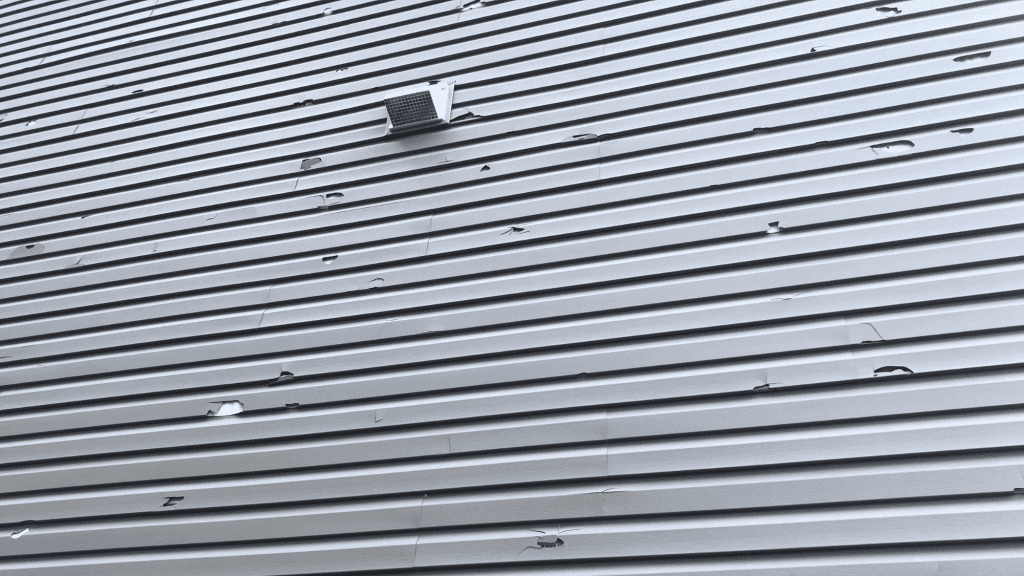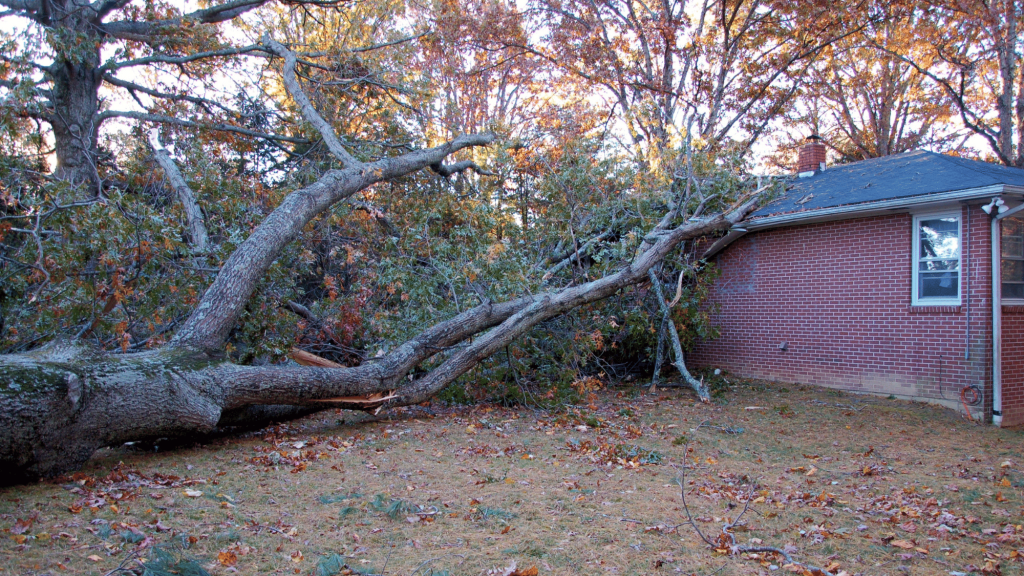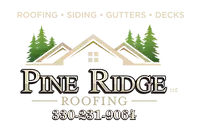North Canton Roof Damage by Weather Conditions and Insurance Claims - A Comprehensive Guide
The safety and security of your home, your personal sanctuary, heavily depend on the condition of your roof. But what happens when unforeseen roof damage by weather conditions occurs? Understanding the diverse types of damage caused by natural elements, navigating the intricacies of the insurance claim process, and adopting effective roof maintenance practices are crucial elements in safeguarding your investment.
This comprehensive guide serves as your companion, guiding you through the essentials and empowering you to protect your home confidently in the face of both “roof damage by weather conditions and insurance claims.”
In North Canton, roof damage resulting from severe weather conditions such as storms, high winds, tornadoes, and hail is a recurrent challenge, and Pine Ridge Roofing is ready to provide assistance.
Key Takeaways
North Canton Roof Damage - Types of Weather-Related Roof Damage
Table of Contents

In North Canton, roof damage by weather conditions is really common. Weather can be unpredictable, and it can wreak havoc on your roof. Wind, hail, and rain or snow are the most common culprits of weather-related roof damage, often leading to insurance claims and costly repairs or replacements.
Protecting your home requires recognizing the signs of storm damage and comprehending how these forces impact your roofing materials.
Is roof damage covered by insurance? For home insurance to provide coverage for your roof damage expenses, it is essential to establish that the damage was a direct result of an extreme weather event.
Wind Damage
In North Canton, roof damage due to high winds can silently compromise the integrity of your roof. This damage may include missing shingles, lifted flashing, or cracked tiles, and in severe cases, the entire roof may be blown away. Though these damages might seem minor initially, they can escalate over time, leading to leaks and structural problems that necessitate navigating the roof insurance claim process.
Repairing an older roof poses its challenges, especially when dealing with less flexible and prone-to-cracking shingles. In such cases, it becomes crucial to involve a qualified roofing specialist for a meticulous roof inspection and to address the damage promptly.
Understanding the specifics of wind insurance coverage in your homeowner’s insurance policy is vital for preparedness, particularly in adverse weather conditions like storms.
Wind damage can result from various weather events such as severe storms or hurricanes. Regularly monitoring your roof after such events is imperative, and quick action is essential upon noticing visible signs of wind damage. If a substantial tree branch is found on your roof, it’s recommended to have it professionally removed to prevent further damage and potential roof damage claims.
Hail Damage
When hailstorms unleash their fury, they can cause extensive damage to your roof, resulting in dents, punctures, and shingle granule loss. Despite the subtle nature of this damage to the untrained eye, its impact on your roof’s overall health and effectiveness cannot be ignored. Hail has the ability to bruise or crack the shingle mat, creating vulnerabilities that allow water to seep into your home, potentially leading to the necessity of a roof claim.
Roof inspection for hail damage can be challenging, especially after a storm. Insurance adjusters and roofing professionals often consider metal components surrounding the roof, such as:
- Roof vents
- Pipe boots
- Gutters
- Roof flashing
It’s important to exercise caution and refrain from inspecting the roof immediately after a storm, especially if it has a steep slope. In instances of significant hail damage, swift actions such as securing tarps to the roof become essential to prevent further damage from rainwater.
Rain and Snow Damage
Rain and snow may seem harmless, but they can wreak havoc on your roof if not properly managed. Here are some potential issues caused by rain and snow:
- Leaks and water damage
- Structural issues
- Roof collapse due to the weight of accumulated snow
- Ice dams, which can damage your roof and gutters
It’s important to take steps to protect your roof from these potential problems.
Undertaking preventive measures such as routine inspections, ensuring sufficient ventilation and waterproofing, and promptly addressing any damage is vital to prevent rain and snow damage. By staying proactive in maintaining your roof and understanding your homeowner’s insurance coverage options, such as Actual Cash Value (ACV) and Replacement Cost Value (RCV) policies, you can minimize the risk of costly repairs or replacements due to weather-related damage.
North Canton Roof Damage - Insurance Coverage for Weather-Related Issues

The financial safety net provided by the insurance company is indispensable in the wake of unforeseen roof damage in North Canton, OH. However, grappling with the nuances of insurance coverage can be an intimidating prospect. Familiarizing yourself with policy nuances, such as Actual Cash Value (ACV) and Replacement Cost Value (RCV), and staying mindful of typical exclusions can significantly impact how your claim is addressed and ultimately settled.
Policy Types: ACV vs RCV
When it comes to roof coverage, an Actual Cash Value (ACV) policy is designed to facilitate the replacement process by reimbursing you for the depreciated value of your roof, minus the deductible. Essentially, this means you’ll receive compensation based on the current value of your roof at the time of damage. However, it’s important to note that this might not cover the entire cost of repairs or replacement.
On the flip side, a Replacement Cost Value (RCV) policy offers more extensive coverage. It covers the entire cost of roof replacement, providing funds for a new roof based on current market prices and materials. Under an RCV policy, you’ll first receive a check for the actual cost value of your roof. After completing the roof replacement, a second check for the remaining amount will be issued, contingent upon meeting all specified requirements.
The choice of a suitable policy for your needs can greatly impact the payout you receive in the event of a roof damage claim, making it an important decision. It is essential to:
- Review your insurance policy
- Understand the differences between ACV and RCV
- Consult with your home insurance company to ensure you have the appropriate coverage for your specific situation.
Common Exclusions
Preserving your home from weather-related roof damage in North Canton, Ohio, with homeowners insurance is a wise choice, but it’s essential to be mindful of common exclusions that may affect your claim, such as:
- improper installation, where deviating from the manufacturer’s instructions or local building codes during roof installation can lead to accelerated wear and tear, potentially invalidating your roof’s warranty.
- Lack of maintenance is another exclusion to watch out for, involving neglecting routine roof upkeep such as cleaning gutters and removing debris. Damages resulting from inadequate maintenance may not be covered by your insurance policy.
- Additionally, specific weather events, like hurricanes or earthquakes, may be excluded from coverage in some policies.
A careful review of your insurance policy is crucial to understand these exclusions and ensure you have the appropriate coverage for your roof. Inadequate maintenance occurs when a roof is not regularly inspected and maintained according to the manufacturer’s instructions or local building codes, possibly resulting in premature deterioration and warranty invalidation.
Understanding these exclusions and taking proactive measures to ensure proper roof installation, regular maintenance, and protection from excluded weather events can help you avoid potential claim denials and ensure you receive the coverage you deserve.
North Canton Roof Damage - Filing an Insurance Claim

Filing an insurance claim for roof damage in North Canton, Ohio demands a strategic and meticulous approach. Knowing how to thoroughly document the damage, establishing effective communication with insurance adjusters, and making informed choices in selecting a roofing contractor are critical components of a successful claims process.
This guide is your companion, offering detailed steps and practical tips to navigate the insurance claim journey for roof damage with ease.
Documenting the Damage
Before filing an insurance claim for roofing damage, it is crucial to maintain a detailed documentation process. Follow these steps:
- Photograph the affected areas extensively, emphasizing any missing shingles, raised flashing, or damaged tiles.
- Prepare a comprehensive list of the damage, accompanied by detailed notes, including dates, times, and relevant weather conditions contributing to the damage.
- If preventive measures have been taken, such as securing tarps to the roofing, document these measures through photographs.
After documenting the damage, seek an estimate from a certified roofing contractor to assess the repair or replacement costs. This estimate not only clarifies the extent of the damage but also serves as critical documentation when presenting your claim to the insurance company. Maintaining a thorough and accurate record of the roofing damage significantly improves the chances of a successful claim.
Working with Adjusters
In North Canton, roof damage insurance adjusters play a vital role in the claims process, evaluating the extent of damage and determining the value of your claim payout. Collaborating effectively with adjusters is crucial for achieving the best possible outcome for your claim. Providing precise information, maintaining meticulous records of all communications and documents related to the claim, and ensuring transparency throughout the process are essential steps.
If your claim faces denial, you have several avenues for resolution:
- Firstly, consider requesting a different adjuster from your insurance company to obtain a second opinion.
- Alternatively, consulting a structural engineer for a thorough inspection and evidence of the damage can strengthen your case.
- As a last resort, legal options can be pursued.
By comprehending the adjusters’ role and being well-prepared to collaborate with them, you significantly enhance the chances of a successful claim. This approach ensures you receive the necessary coverage to repair or replace your roof damaged in North Canton.
Choosing a Reputable Roofing Contractor
Choosing a reputable roofing contractor assures quality work and facilitates a smooth claims process. When researching roofing contractors for insurance claims, consider their experience with insurance claims, turnaround times, and their ability to work with adjusters. A qualified roofing contractor can accurately document the damage according to insurance companies’ requirements and provide an expert assessment.
Choosing a local and reliable roofing contractor, such as Pine Ridge Roofing, can provide peace of mind knowing that your roof repair or replacement is in good hands. Their team of certified roofers and insurance specialists is available to assist with storm repair, restoration, and insurance claims in North Canton, Ohio, and the surrounding areas. By selecting an experienced roofing contractor, you can ensure the safety and integrity of your home.
North Canton Roof Damage - Preventative Measures and Maintenance

While insurance serves as a financial safeguard against roof damage caused by adverse weather conditions, adopting preventative measures is equally crucial. Routine inspections, proper ventilation, and robust waterproofing are key elements in preserving the integrity of your roof. By prioritizing these preventive actions, you can significantly reduce the risk of weather-related damage, mitigating the need for expensive repairs or replacements in the long run.
Routine Inspections
Regular roof inspections serve as an effective method to spot and tackle potential issues before they escalate into significant problems. Inspections should evaluate the roof for signs of:
- Deterioration
- Missing or damaged shingles
- Debris in the gutters
- Roof ponding
For optimal roof health, it’s crucial to conduct routine inspections, particularly in regions with challenging weather conditions. Aim for inspections at least twice a year to detect and address minor issues early on, preventing them from turning into major concerns.
Pine Ridge Roofing, a reputable contractor, provides free roof inspections to ensure your roof’s integrity. Take a proactive step in preserving your roof—schedule your inspection today by calling us now.
Proper Ventilation and Waterproofing
Preventing moisture buildup, ice dams, and other weather-related roof damage necessitates proper ventilation and waterproofing. Effective ventilation and waterproofing practices include:
- Ensuring good indoor air quality
- Implementing proper home ventilation
- Using exhaust fans and air purifiers
- Installing a sound ventilation system
- Properly attaching roof ventilation products
Inadequate ventilation and waterproofing can result in moisture accumulation, ice dams, and other weather-related damage, potentially necessitating costly repairs and replacements. By ensuring your roof is properly ventilated and waterproofed, you can minimize the risk of damage and maintain the performance and, lifespan of your roofing materials.
Pine Ridge Roofing: Your Partner in Roof Repair and Insurance Claims

Pine Ridge Roofing, serving North Canton, Ohio, and surrounding areas, specializes in:
- Storm damage repairs
- Insurance claims
- Emergency inspection
- Tarping services
- Assistance with insurance claims for weather-related roof damage
- Roof replacements
- Siding repair and replacement
- Gutter repair and replacement
- Leaf Guard Installation
- Deck building
With a combined experience exceeding 25 years, our team of certified roofers and insurance specialists is unwavering in its commitment to providing excellent roof repairs. We are dedicated to safeguarding and restoring your home following any weather-related damage event.
Emergency Inspection and Tarping Services
When roof damage is suspected, don’t hesitate to schedule a complimentary emergency inspection with Pine Ridge Roofing. This inspection is instrumental in assessing the damage’s extent, facilitating informed decisions on necessary repairs or replacements. Our team of professionals conducts a comprehensive evaluation of your roof, identifying issues such as missing shingles, raised flashing, or cracked tiles that require immediate attention.
In addition to emergency inspections, Pine Ridge Roofing provides the following services:
- Our tarping services offer temporary protection, preventing further damage to your roof.
- Act promptly by securing your roof with tarps to minimize the risk of additional damage.
- We ensure your home remains safe and secure throughout the insurance claim process.
Insurance Claim Assistance
Navigating the insurance claim process can be overwhelming, but Pine Ridge Roofing is here to help. They offer the following services:
- Assisting with insurance claims
- Representing homeowners
- Negotiating with insurance companies
- Providing quality roof replacement services
When it comes to insurance claims, Pine Ridge Roofing’s expertise guarantees the best possible outcome, allowing you to prioritize your family’s safety and well-being. Their insurance claim assistance includes:
- emergency inspections
- tarping damaged areas
- representing homeowners during insurance adjuster meetings
- negotiating with insurance companies
- utilizing top-notch products such as Owens Corning shingles and synthetic felt for roof replacements.
With Pine Ridge Roofing, you can trust that your roof repair or replacement will be handled professionally and efficiently, ensuring the protection of your home.
Summary
Coping with weather-related roof damage in North Canton, OH can be overwhelming for any homeowner. The key lies in understanding the nuances of damage, effectively maneuvering through the insurance claim procedure, and implementing preventative measures for roof maintenance. This comprehensive guide empowers you with insights. With the support of Pine Ridge Roofing, a reputable contractor, you can confront weather-related roof issues with assurance, safeguarding your home and family.
Frequently Asked Questions
Does Home Insurance Cover Roof Storm Damage?
The coverage of roof storm damage in your home insurance policy hinges on the specific terms included in the plan. Most insurance plans typically cover damages resulting from hail, strong winds, destruction caused by falling objects, and internal damage due to roof storm damage. For instance, if a storm results in the destruction of your roof and subsequent rainwater damage to the ceiling, your insurance policy will generally provide coverage for repairing both the roof and ceiling.
Are blown-off shingles covered by insurance?
The insurance industry comprehends the vital role of a roof, frequently providing coverage for the replacement costs incurred due to unforeseen circumstances, like the wind-driven loss of shingles.
What is considered wind damage to shingles?
Shingles, when subjected to strong winds, can exhibit telltale signs of damage such as tearing, creasing, or detachment from the roof structure. This vulnerability is more pronounced in three-tab shingles, attributed to the repetitive lifting or flapping they undergo. It’s important to note that unsealed shingles are generally immune to these issues unless accompanied by visible physical mat damage.
My roof doesn’t leak. Does this mean my roof is okay?
Simply because your roof isn’t showing leaks doesn’t mean it’s in optimal condition. Roof damage can linger unseen, and leaks may not become apparent until a future rainfall. At Pine Ridge Roofing, our adept professionals utilize specialized tools and techniques to uncover moisture beneath roofing materials and identify hidden areas of damage. Don’t let concealed issues persist unnoticed—contact us for a free inspection today!
What is the most common roof damage?
Roof damage in North Canton, Ohio is a prevalent issue leading to leaks. This commonly arises from compromised shingles, inadequately installed flashing near chimneys or gutters, and around vents or pipes.













